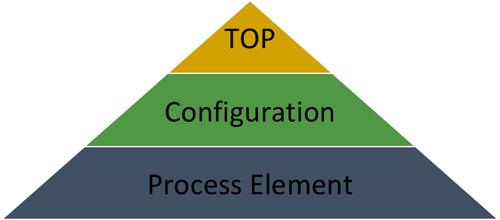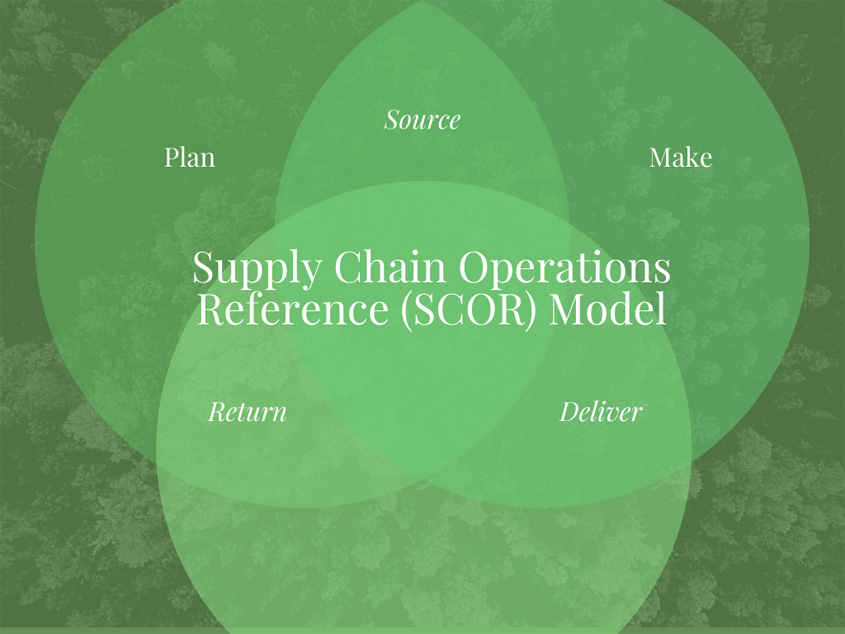In 1982, Keith Oliver first coined the ‘Supply Chain Management’ (SCM) term and used it in a public interview conducted by Financial Times. Subsequently, various domain experts across the world had revamped SCM by developing integrated systems which thereby extended specialized supply-chain partnerships through Original Equipment Manufacturer (OEM). By and large, because of these systems today, we have quite a few supply-chain models that fit the business needs of the firm. These models are as follows along with their applications.
- Agile Model is ideal for businesses that deal in speciality order items
- Continuous Flow Model offers stability in high demand market but with little fluctuation
- Custom Configured Model provides custom configurations at production and assembly level
- Efficient Chain Model is for businesses that are in competitive markets and end to end efficiency is a must
- Fast Chain Model is for businesses with products that are trendy and have a short life cycle
- Flexible Model provides the freedom to meet high demand peaks and manage long periods of low volume movement
- Supply Chain Operations Reference (SCOR) Model is to assess waste, establish standards and continuous improvement in the SCM system
For strategic decision-making, one of the most promising models is the SCOR Model. It has divided business into different processes which creates an environment of constant engagement for management. It helps firms to improve the processes at the macro as well as the micro-level.
The model defines the elements of supply chain management – Top, Configuration and Process Element. Talking about each level’s lookout,
1. Top-level has defined scope and content for supply chain
2. Configuration level has configured the company’s strategy for the supply chain
3. Process element level fine-tunes the company’s operations strategy and contains process element definitions, process performance metrics and best practices

Moreover, this methodology gives options to companies to implement their custom designs or alter the existing one with a blend of standard-cum-custom designs.
The Top-level of this model has five different processes which are also known as components of Supply Chain Management – Plan, Source, Make, Deliver and Return. Let’s deep dive into each component:
- Plan: Planning is imperative to control inventory and manufacturing processes. Companies always try to match supply with aggregate demand by developing a course of action using analytics. To procure what is planned is ‘Source’. To plan what is ample for production is ‘Make’ and to attain significant service levels by delivering on time with quoted lead time is ‘Deliver’. Furthermore, it is advisable to be alert with a vigilant eye on demand variations along the value-chain to avoid Bullwhip effect. For instance, firms predict market demand using analytical tools and plan the required raw materials using certain material planning tools such as Material Requirement Planning (in SAP ERP system).
- Source: Sourcing is identifying vendors who will procure goods and services to meet planned/actual demand in the most economical and efficient way. There are certain standards that suppliers need to fulfil, thus assuring the firm to deliver quality goods to the client. Sourcing can be of perishable as well as non-perishable products. In the case of perishable products, it is mandated to have a minimum supplier’s lead time which will support a minimal inventory approach. On the other hand, in the case of non-perishable products, the supplier’s quoted lead time must be less than the number of days by when inventory reaches zero, thus leading to no loss in revenue.
- Make: As per the preference of the consumer, the firm will perform all activities related to the transformation of raw material to the final product. Activities such as assembling, testing and packing happen at this element of Supply Chain Management. Feedback from consumers creates a Win-Win situation for both (manufacturer and end-user) as for the firm it is improving their production operations continuously.
- Deliver: Another most important component of supply chain management is contributing to direct/indirect integration with the consumers. It has a significant contribution to surge the brand image of the firm. Finished goods and services, as demanded by consumers, have to meet expectations through the company’s delivery channels and logistics services. To have a seamless delivery, the firm utilizes various freights – road, air and rail.
- Return: It is a post-delivery customer support process that is associated with all kinds of returned products. It is also known as ‘Reverse Logistics’. It is one of the most important components of supply chain management to minimize potential deterioration of relationships with customers. On the flip side, this process provides the same course of action for the firm towards its suppliers. The firm returns the low quality, defective, expired or excessive raw materials to the suppliers/vendors.

Briefly, these are the elements of supply chain management that leaders look upon while taking strategic decisions. Therefore, each component of supply chain management is vital to take any strategic decisions either in terms of product or vertical diversification in an organization. With the on-going trend of digital transformation, many digital initiatives have been taken to make supply chain leaner, which can be used by the firm as a competitive advantage. As Tom Peters rightly said – ‘Almost all quality improvement comes via simplification of design, manufacturing… layout, processes and procedures.’
Being considerate of the industry shift, disruptive trends, changing supply chain strategies in new directions, IIM Udaipur is offering a One-year MBA in Logistics and Supply Chain Management with a specialization in global supply chain management. The program brings all these facets of the supply chain together and helps managers to make better-informed decisions so that they don’t get left behind.
About the Author:

Mridul is currently pursuing the one year MBA program in Operations and Global Supply Chain Management at IIM Udaipur. He is an experienced SAP Consultant with a demonstrated history of working in the information technology and services industry. He has been providing ERP solutions for plant manufacturing processes and supply chain based clients. He maintains interest in travelling, biking and sports. You can connect with him on LinkedIn

Leave a Reply